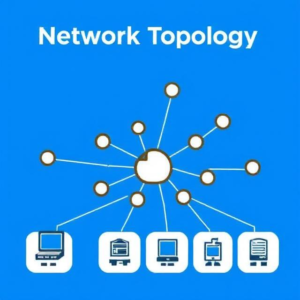What is Cloud Computing?
Cloud computing is like using storage space on the internet instead of owning and managing your own physical computer, server, or data storage. It’s a way to access and use computer resources (such as data storage, processing power, software, and services) over the internet, without needing to maintain or manage the infrastructure. Files are stored on large computers (called servers) located in data centers far away and can be accessed anytime, from any device, as long as you have an internet connection. Cloud computing is like using the internet to access a powerful, virtual computer without needing to own it. It’s cost-effective, flexible, and reliable, making it a popular choice for individuals and businesses alike. Whether you’re storing files, using software, or running applications, cloud computing allows you to do all of it online, and you can scale up or down as needed.

Components of Cloud Computing :
- Infrastructure as a Service (IaaS):
- This provides the basic building blocks: storage, networking, and computing power.
- For example, Amazon Web Services (AWS) or Microsoft Azure provide virtual machines and storage that you can use as needed.
- You only pay for what you use, so if you need more power or storage, you can “rent” more resources without buying expensive hardware.
- Platform as a Service (PaaS):
- This is a bit more advanced and includes tools to help developers build applications without having to worry about managing the underlying infrastructure.
- An example would be Google App Engine or Heroku.
- Developers can focus on writing the code for their app while the platform handles things like security, storage, and networking.
- Software as a Service (SaaS):
- This is where you use software applications that are hosted in the cloud, instead of installing them on your own computer.
- Examples include services like Gmail (email), Microsoft Office 365 (word processing, spreadsheets), or Netflix (streaming movies).
- You don’t need to worry about updating or maintaining the software, because everything is managed online.
Benefits of Cloud Computing
- Cost-Efficiency:
- You only pay for what you use, instead of buying and maintaining your own expensive hardware or software.
- It saves companies a lot of money, as they don’t have to invest in physical infrastructure, and individuals can store files without paying for hard drives or external storage.
- Scalability:
- You can easily increase or decrease the resources you use, depending on your needs. If you run a business and suddenly need more storage or computing power, you can just scale up without needing to buy new hardware.
- Accessibility:
- Since everything is stored in the cloud, you can access your data and applications from anywhere, using any device that’s connected to the internet (laptop, smartphone, tablet, etc.).
- Reliability:
- Cloud providers often have multiple data centers around the world, which means your data is stored in several locations, making it safer and reducing the chance of losing it.
- If one data center goes down, the service can continue running from another location.
- Automatic Updates and Maintenance:
- With cloud services, you don’t need to worry about updates, patches, or fixing bugs. The provider handles that automatically, ensuring your software is always up-to-date.
Types of Cloud Deployment
- Public Cloud:
- This is where the cloud resources (like storage or computing power) are owned and managed by a third-party company (like AWS, Google Cloud, or Microsoft Azure). These resources are shared among multiple customers.
- It’s cost-effective, but you don’t have as much control over how things are set up.
- Private Cloud:
- A private cloud is a cloud infrastructure used exclusively by one organization. It can be hosted either on-premises (on the company’s own servers) or by a third-party provider.
- It gives more control and security but can be more expensive.
- Hybrid Cloud:
- This combines both public and private clouds, allowing data and applications to move between them. This offers more flexibility and optimization for workloads.
Real-World Examples
- Storing Files:
- Google Drive, OneDrive, and iCloud are all cloud-based storage services that let you store files online and access them from any device.
- Software Applications:
- Services like Gmail or Microsoft Office 365 are examples of SaaS (Software as a Service), where you access the software over the internet without needing to install anything on your computer.
- Running Applications:
- A company can use AWS or Azure to host their website or app, so they don’t need to buy their own servers. The cloud provider handles all the technical work (like running servers and ensuring security).











